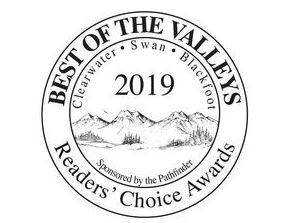Community Foundation
PROUD TO BE FEATURED IN A VIDEO CELEBRATING HOW COMMUNITY FOUNDATIONS HELP OUR LOCAL MONTANA COMMUNITIES
“A community is the mental and spiritual condition of knowing that the place is shared, and that the people who share the place define and limit the possibilities of each other's lives. It is the knowledge that people have of each other, their concern for each other, their trust in each other, the freedom with which they come and go among themselves.”
― Wendell Berry
What is a Community Foundation?
Community foundations are independent, public entities that steward philanthropic resources from institutional and individual donors to local nonprofits and represent one of the fastest-growing forms of philanthropy.
They are non-profit, public charities that manage funds for individuals, families, corporations, and non-profit organizations, and grant money back to a community or region. The funds are often endowed; this means the principal amount remains intact while income from investments are provided in some charitable effort. Differing from private foundations that are often focused on a specific topic or area of interest, community foundations are often focused on a specific geographic area.
Community foundations are typically run by a volunteer board of directors from the community, who serve to provide collective oversight of the funds and grantmaking objectives. Donors can decide if they want to make a charitable contribution in the present or as a future gift and advise how donations will be spent.
Community foundations can also offer tax savings, including the Montana Charitable Endowment Tax Credit. Community foundations encourage members of a specific community (defined by a geographic area but sometimes as a community of interest or identity) or region to engage in conversations about the present and future vision of the community. This can include discussion about current and future leadership capacities, how to strengthen relationships, build trust, and work to identify, prioritize and address the needs and aspirations of the community.
The first community foundation was created in the city of Cleveland in 1914. According to the Council on Foundations, there are now over 750 community foundations in the United States that serve an estimated 81 percent of the population. These foundations have approximately $50 billion in permanently-endowed funds and provide almost $4 billion in grants to communities each year.
Community Foundations in Montana
“Over the next ten years, it is projected that nearly nine billion dollars will pass out of the estates of Montana residents. Local and county community foundations are critical to retaining a portion of that wealth to preserve Montana’s legacy.”— former Governor Brian Schweitzer
The state of Montana has more than 70 community foundations, many of which are affiliated with the Montana Community Foundation (MCF) that manage the community funds, leveraging them to create a larger investment pool. It is estimated by Macke, Markley, & Binerer (2012), that between 2010 and 2060, approximately $123 billion of wealth will be transferred in Montana; if just 5 percent, or $6 billion, of this wealth transfer was captured in permanently-endowed funds, a potential $307 million could be available annually through foundations for grants to support community development. With a rapidly aging population in Montana, the potential for donations and bequests to foundations is sizeable, as is the subsequent economic development and benefit of capturing this transfer of wealth.”
The information above is excerpted from Community Foundations in Montana, published by Montana State University Extension.
See also, the 2008 Guide to Supporting Montana’s Local and County Community Foundations, by the Big Sky Institute for the Advancement of Nonprofits.





